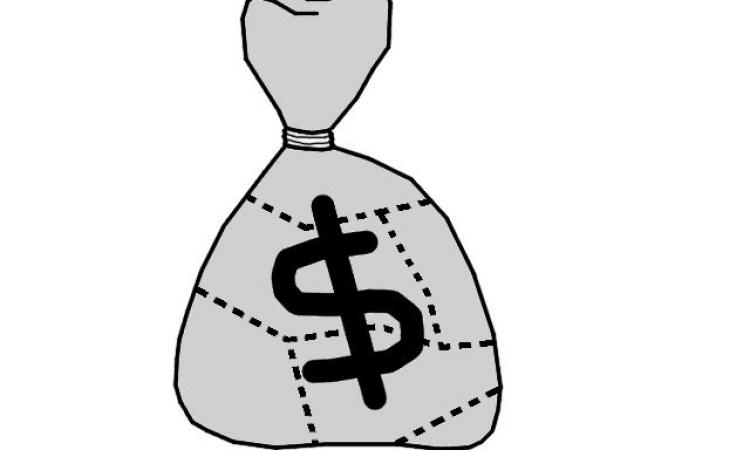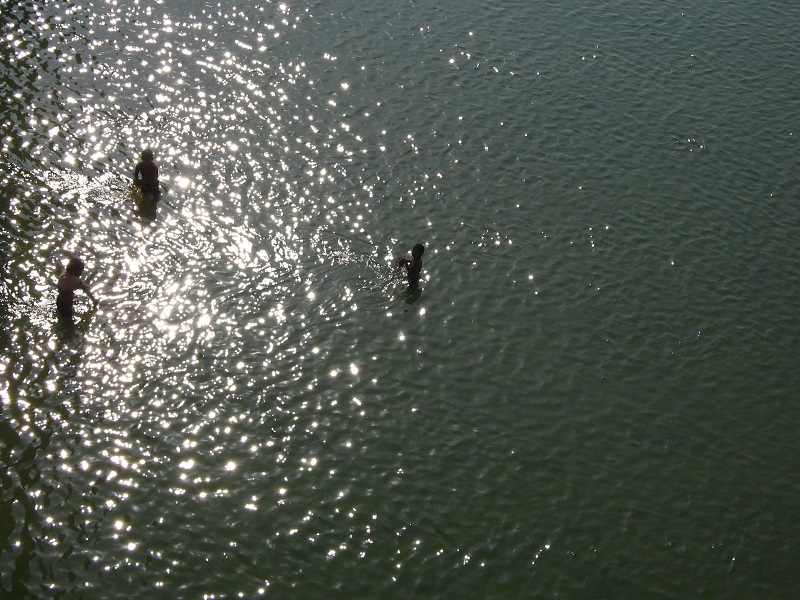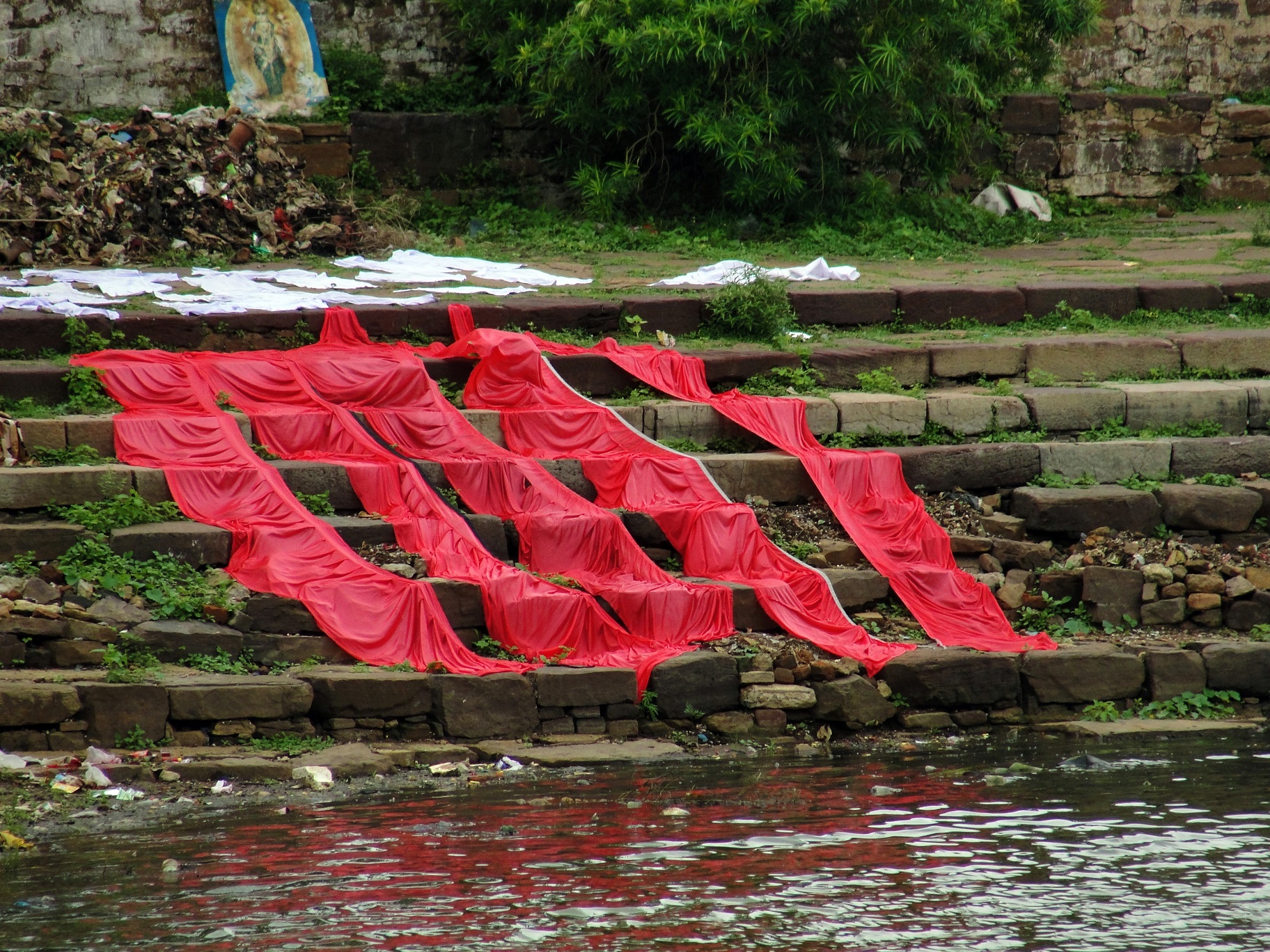
The 2014 Union Budget is being hailed as both challenging and decisive. Various important water issues such as rivers, watershed and safe drinking water have been addressed, money earmarked and plans and programmes announced.
The Rail Budget has a water angle to it too. It has stressed on bio toilets, cleaner stations and sufficient water supply, a move that commuters look forward to. Reverse Osmosis (RO) units are to be set up in stations and trains on an experimental basis. As both a green initiative as well as something with a human rights angle, there is a plan to replace existing toilets with bio toilets by the end of 2021-22 in order to eliminate direct discharge of human waste on the railway tracks, which requires manual scavengers to clean.
Other water aspects of the Union Budget 2014
Safe Drinking Water
- Budget inlay: It is proposed to earmark Rs 3,600 crore under the National Rural Drinking Water Programme for providing safe drinking water in approximately 20,000 habitations affected with arsenic, fluoride, heavy/toxic elements, pesticides/ fertilizers through community water purification plants in next 3 years.

Last year's budget set aside a Rs. 1,400 crore provision for the setting up of water purification plants in 2000 arsenic and 12000 fluoride-affected rural habitations but the bigger question is not just about the allocation but about its judicious utilisation.
As Sunderrajan of the Flouride Knowledge and Action Network says, “ While it is very good that a substantial expenditure estimate is made for 'community water purification plants', we need to pause and take a look at the experiences of implementing these plants in the country for the past 30 years. Barring a few exceptions, all such plants are lying idle beyond the period of 3 years of the maintenance contract. What is different about what we are proposing here? Would this money too not go down the drain"?
Watershed Development
- Budget inlay: To give an added impetus to watershed development in the country, a new programme called 'Neeranchal' has been proposed with an initial outlay of Rs 2,142 crores in the current financial year.
About 55% of our agriculture and nearly half of our food crop area is rain-fed. For farmers, rains are essential for survival, and their delay or deficiency can lead to a huge crop output reduction or even total crop failure. A reformed watershed programme can enhance the food production growth in the country. The additional budget for this will supplement and strengthen the existing Integrated Watershed Management Programme (IWMP) that aims to restore the ecological balance in all states across the country except Goa. The 'Neeranchal' programme focusses and supports IWMP activities in the states of Andhra Pradesh, Tellangana, Chhattisgarh, Gujarat, Jharkhand, Madhya Pradesh, Maharashtra, Odisha and Rajasthan.
M.V. Ramachandrudu, WASSAN, elaborates," The money is to be utilised for building strengthening tools that will include groundwater initiatives, capacity building , project management tools and path breaking innovations".
In the past, it has been observed that the progress has been slow in some states. Many a time, the state government has been unable to spend the complete budget allocated to them. "What will be effectiive is a phased approach, not just a large budget", adds Ramchandrudu. "The move, though creditable, needs more creativity and better expertise, and the government would profit by engaging an effective partnership with the civil society and through better human resource deployment".
Inland Navigation
- Budget inlay: A project on the river Ganga called ‘Jal Marg Vikas’ (National Waterways-I) will be developed, to be completed over a period of six years at an estimated cost of Rs 4,200 crore.
 The existing National Waterways I was established in 1986, but increased silt deposition in the Ganges riverbed, has reduced its depth and made the existing waterway non navigational. Since cargo transportation is cheaper than rail, this navigation plan is expected to help traders and bring about development in the area as well.
The existing National Waterways I was established in 1986, but increased silt deposition in the Ganges riverbed, has reduced its depth and made the existing waterway non navigational. Since cargo transportation is cheaper than rail, this navigation plan is expected to help traders and bring about development in the area as well.
The waterway route will begin at Allahabad (UP), and end at Haldia (West Bengal), through Patna (Bihar), cover a distance of 1620 km, and enable commercial navigation of at least 1500 tonne vessels.
Shripad Dharmadhikary of Manthan Adhyayan Kendra, agrees that inland navigation can be an important part of the transport and connectivity for many parts of the country. However, the integrity of the river and river systems must be maintained, and any attempt to improve and modernise navigation must include smaller vessels and local boats, which have traditionally used the river.
This proposal will also lead to the construction of barrages across the river, more traffic and possibly increased pollution levels. As Shripad asserts, "There has been talk of building barrages every 100 kms on the Ganga. This could have many serious side effects. It must not be put in place before a comprehensive impact assessment is made in a credible, transparent and participatory manner".
Linking of Rivers
Budget inlay: Rivers form the lifeline of our country. They provide water not only for producing food for the multitudes but also for drinking. An effort to link the rivers can give rich dividends to the country. It is time that we made a serious effort to move in this direction. To expedite the preparation of the Detailed Project Reports, I propose to set aside a sum of Rs. 100 crore.
Interlinking of rivers follows a simple philosophy of water transfer from a surplus basin to a deficit one. This 'surplus' is estimated only on the basis of irrigation, water supply and hydro power needs and not on the needs of the river, ecology, community and livelihoods.
But rivers are not simply conduits of water, but thriving, living, ecological entities.
Even though river interlinking is expected to solve flooding and water scarcity problems, generate power, provide water for irrigation, and reduce our import demand for food grain, its obvious downside are loss of fertile land, social unrest, displacement and rehabilitation of people, high energy requirement, and other ecological impacts.
Indukanth Ragade says, "Linking of rivers is a dangerous line of action. It is actually playing with fire when better alternatives are available". Alternatives such as rainwater harvesting (RWH) and recharging groundwater resources, if we are thinking of a more sustainable and ecological solution.
He further comments, "One must realise that rivers are fed by rain, and when water is drawn from rivers for agriculture/drinking or other needs, the methodology is basically RWH at the macro level. If the government actively encourages RWH at the micro level, a great majority of our urban citizens willl become substantially self-reliant in water and the load on the government to supply piped water will considerably reduce."
Sacred Rivers
Budget inlay: A proposal to set up Integrated Ganga Conservation Mission called 'Namami Gange' and set aside a sum of Rs 2,037 crores for this purpose.
The first Ganga Action Plan was announced in 1986, and since then over Rs. 20,000  crore of tax payers money has been spent on various clean-up projects. As per government estimates, about 2,900 million litres of sewage is discharged every day into the Ganga from municipal towns located along its banks.
crore of tax payers money has been spent on various clean-up projects. As per government estimates, about 2,900 million litres of sewage is discharged every day into the Ganga from municipal towns located along its banks.
As per the 2013 Central Pollution Control Board (CPCB) report, about 55% of sewage dumped along the Ganga's main canal is untreated; the unofficial figure is higher at 80%. The government needs to think beyond STPs and work on ensuring the environmental flow of the river, if we want to keep it clean and alive.
Swami Dayanand of Matri Sadan, says that simply allocating huge amounts of money for a 'Clean Ganga' is not the answer. He clarifies, " Ganga can only be 'aviral & nirmal' if no sewage, whether raw or treated, is allowed to be dumped into the river. For this, the STPs along the course of the sacred river must be shifted and their treated effluent redirected to farmers for irrigation. Atleast 50% of the river water must be allowed to flow freely, if we are to even think of a clean Ganga".
Development of Ghats and beautification of riverfront
- Budget inlay: A proposal to set aside a sum of Rs 100 crore for Ghat development and beautification of the riverfront at Kedarnath, Haridwar, Kanpur, Varanasi, Allahabad, Patna and Delhi.
 Clean, sparkling and well kept ghats will be a welcome change for all who come to the rivers but for that to happen, the river too needs to be clean all the way from Gangotri to Ganga Sagar, and not just the stretch of the ghats.
Clean, sparkling and well kept ghats will be a welcome change for all who come to the rivers but for that to happen, the river too needs to be clean all the way from Gangotri to Ganga Sagar, and not just the stretch of the ghats.
K. G. Vyas, Former Advisor, Rajiv Gandhi Watershed Mission, says, "Ghats should be designed and developed for safety and convenience of people coming to the river. Beautification is desirable and funds should come from Sansad Nidhi, MLA nidhi, Corporate Social Responsibility funds, donations and local bodies".
Shripad however cautions against the Sabarmati riverfront being projected as a role model. "The Sabarmati project has involved many problematic things. It displaced the river side population, whereas riverfront beautification should be first and foremost for the local communities and must involve them".
He further adds that the Sabarmati project essentially involved concretising and channelising sections of the river, something that is against the principles of preserving the integrity of a river. He hopes that the riverfront development does not take place in a manner that is exclusive, elitist and against the conservation of the natural character of the river.
Education & sanitation
- Budget inlay: Government would strive to provide toilets and drinking water in all the girls school in the first phase.

In rural government schools, the percentage of girls who attend school in the age group of 11-14 is about 4% lesser than those in the age group of 7-10. This number drops by a further 19.9% by the time they reach the 15-16 years age group. (ASER report, 2013).
Lack of functional toilets is thought to be a prime factor in keeping girls away from mainstream education, even though in 2011, the Supreme Court of India issued an order requiring that all schools meet the Right To Education (RTE) norms for girls’ toilets by the end of the year.
But toilet building is simply the first step.
Seema Kulkarni of SOPPECOM, emphasises on the gender specifics of toilets. “They need to be both usable and safe. Toilet design must keep in mind the menstrual hygiene requirement and safety aspects of women, so that these do not end up as spaces for sexual harassment“.
Delhi reforms
- Budget inlay: For NCT of Delhi it is proposed to provide Rs. 200 crore for power reforms and Rs. 500 crore for water reforms. In addition, to solve the long term water supply issues to the capital region, construction of long pending Renuka Dam would be taken up on priority. For this an initial sum of Rs. 50 crore has been provided.
The proposed Renuka Dam Project over the river Giri Ganga (a tributary of the Yamuna), is expected to meet a part of Delhi's water demands. Already, the capital city sources water from the Bhakra Nangal Project, Tehri Dam Project and directly from the Yamuna and Ganga. This project seems to be yet another step in quenching its increasing thirst.
Himanshu Thakkar, SANDRP, agrees. "Delhi does not need any more water from outside, it is already privileged with per capita water availability of over 250 lpcd, which is more than most European cities". He clarifies that Delhi does nothing to improve its water woes and become self sufficent. Instead, "like a spoilt kid, asks more and more water from long distance sources".
"Is Renuka Dam the answer?", asks Dipak Dholakia. "No! It does not take into account the growth of population rendering the solution itself meaningless. The Renuka dam is to provide additional 275 mgd (million gallon per day) of water after 7 years by which time Delhi's population will have increased by another 5 to 6 million".
He further elaborates, "The water fetched from a far off place in Himachal Pradesh will be prone to leakage, seepage and pilferage problems increasing its cost in practical terms. The budget should have provided funds for rejuvenation of local water bodies, which could be achieved at a much lesser cost and would have created valuable assets. Moreover, it would have opened the way for decentralized water management involving the local people in a particular area".
The other aspect is of the local people who will be directly affected by this project. Puranchand Sharma, of Ma Renukaji Sangarsh Samiti, says,"What will be the benefit for the people who live here? We lose the river where our animals drink, we lose the trees and also lose our land".
He adds,"Disturbing the Himalayas will have an ecological consequence as seen in the Uttarakhand devastation last year. Are we ready to face it again"?
The Statue of Unity versus water
The government has set aside Rs. 200 crore for the erection of the 'Statue of Unity' to support the Gujarat government in its mission to build the statue of Sardar Vallabh Bhai Patel as a symbol of unity within the country.
The money allotted for the statue is twice the money allotted for ghat development and beautification of riverfronts, two times the money sanctioned for the preparation of Detailed Project Reports, and four times the initial sum set aside in the budget for the construction of the Renuka dam.
A comparative chart of the money earmarked (Rs in Crores), shows the budget allocation for the major water issues in relation to the Rs 200 Crores set aside for the erection of the statue.
The Union Budget 2014, seems to be a mixed vessel of new and old water. It has opened up new ideas and possibilities, but also managed to rehash old pending issues. While there is no questioning the funds allocation towards the various aspects of water, the lack of clarity on its intent and execution is questionable.